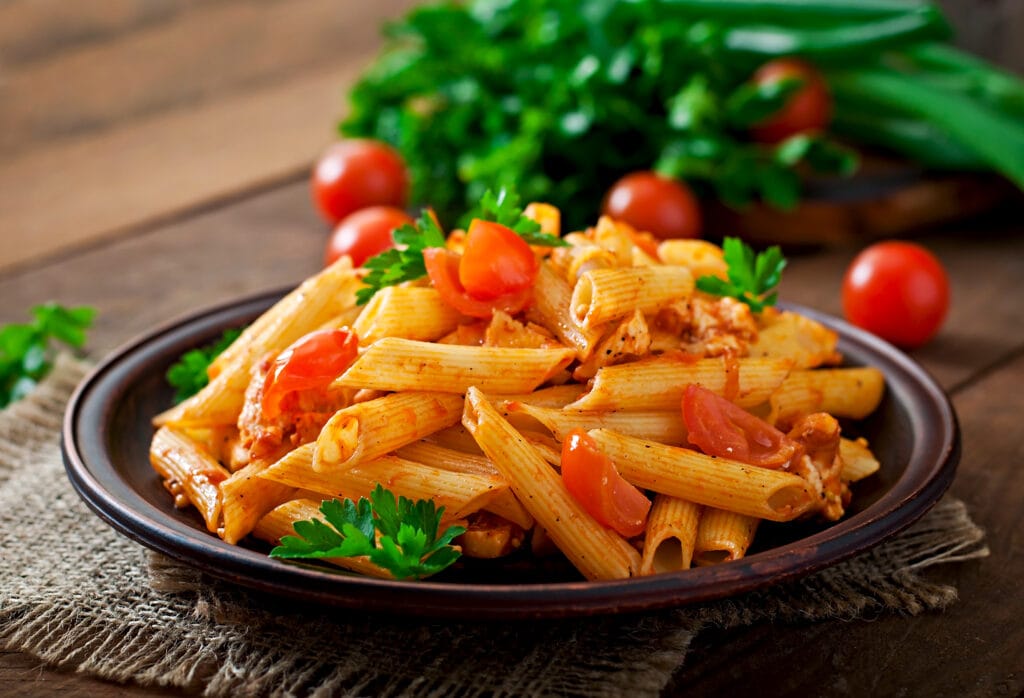
When it comes to pasta, many of us are creatures of habit. We stick to classic marinara, rich Alfredo, or perhaps a simple aglio e olio. But what if I told you that your beloved pasta could be transformed with a few unexpected ingredients—ingredients that not only surprise the palate but also elevate your dishes to a whole new level? Over the years, I’ve experimented in my own kitchen, stumbling upon ingredients that seemed unconventional but turned out to be game-changers. This journey into culinary experimentation is not just about novelty—it’s about expanding your flavor horizons and discovering new culinary possibilities.
In this comprehensive guide, we’ll explore a variety of unexpected ingredients for pasta dishes. From secret flavor enhancers to surprising additions inspired by global cuisines, you’ll find ideas, tips, and stories to inspire your next pasta adventure. Whether you’re a seasoned home chef or just someone looking to spice up your weekly routine, this article is your ultimate resource for turning ordinary pasta into extraordinary meals.
Read Also: Sizzling Asian Appetizers: A Culinary Journey Through Flavor and Culture
The Charm of Unexpected Ingredients: Why Venture Beyond Tradition?
Before diving into specific ingredients, let’s take a moment to understand why experimenting with unexpected additions can be so rewarding. Traditional pasta sauces have stood the test of time because they balance flavors harmoniously. However, adding unconventional ingredients can introduce new textures, aromas, and tastes that refresh your palate and challenge your culinary assumptions.
According to food scientists and flavor experts, unexpected ingredients can create umami boosts, provide textural contrasts, or introduce aromatic complexity, making your dishes more layered and memorable. Moreover, exploring these ingredients connects us to diverse cultural traditions and regional cuisines, broadening our culinary appreciation.
Unexpected Ingredients for Pasta Dishes: From the Familiar to the Fantastic
Let’s embark on a culinary exploration. The following ingredients may seem unusual at first, but with the right pairing and technique, they can become your new pantry staples.
1. Roasted Beetroot
Imagine a vibrant, earthy twist on classic pasta. Roasted beetroot adds a natural sweetness and stunning color, especially when blended into a sauce or grated over hot pasta. Its deep flavor complements tangy cheeses like goat cheese or ricotta beautifully. For detailed roasting tips and sauce ideas, The New York Times Cooking offers fantastic recipes.
2. Pomegranate Seeds
Pomegranate seeds bring a burst of juicy tartness and a beautiful ruby hue to pasta salads or cream-based sauces. Their juicy pop contrasts beautifully with creamy textures, adding freshness that elevates the dish. They work particularly well with Mediterranean-inspired pasta dishes, pairing seamlessly with ingredients like feta, olives, and fresh herbs.
3. Coconut Milk
While coconut milk is a staple in Southeast Asian curries, it’s surprisingly effective in pasta sauces too. Swapping traditional cream for coconut milk yields a rich, subtly sweet sauce that pairs well with seafood or spicy ingredients. It’s a dairy-free alternative that adds a tropical twist, as highlighted by chefs experimenting with fusion cuisine.
4. Lemon Basil Oil
Infuse olive oil with fresh basil and lemon zest to create a fragrant, citrusy finishing oil. Drizzle over hot pasta for an instant flavor boost. This simple yet powerful ingredient can elevate a plain spaghetti aglio e olio or brighten up a creamy mushroom pasta.
5. Roasted Eggplant
Roasted eggplant offers a smoky, umami-rich flavor that can be pureed into sauces or diced for texture. It’s an excellent addition to vegetarian pasta dishes or as a meat substitute, inspired by Mediterranean and Middle Eastern cuisines.
6. Sumac
This tangy, lemony spice from the Middle East adds a bright, acidic note that can lift simple pasta dishes. Sprinkle it over roasted vegetables or mix into olive oil for a flavor-enhancing marinade. Its unique flavor profile adds depth and complexity.
7. Anchovy Paste (Beyond Traditional)
While anchovies are common in Italian cooking, using anchovy paste in unexpected ways—such as in a pesto or a spicy tomato sauce—can add an umami kick without overpowering the dish. It’s a secret weapon for depth, as detailed by culinary experts at Serious Eats.
8. Pickled Vegetables
Adding pickled vegetables like carrots, radishes, or cauliflower introduces acidity and crunch, balancing rich sauces and adding a tangy punch. Think of it as a way to incorporate a bit of fermentation into your pasta experience, inspired by Korean bibimbap.
9. Sesame Oil
A splash of toasted sesame oil adds a nutty aroma and flavor, perfect for Asian-inspired pasta dishes. Use it in combination with soy sauce and ginger for a quick, flavorful stir-fry pasta.
10. Cheddar or Blue Cheese
Unconventional but delicious—melting blue cheese into a sauce creates a sharp, creamy contrast, especially with roasted veggies. Cheddar can add a comforting, melt-in-your-mouth quality to baked pasta dishes, inspired by comfort foods from around the world.
The Science and Art of Pairing Unexpected Ingredients
Experimenting with ingredients requires both a scientific understanding of flavor compatibility and an artistic sense of balance. For example, balancing sweetness with acidity, or richness with freshness, ensures that unexpected ingredients enhance rather than overpower.
Professional chefs often advise tasting as you go, adjusting seasonings, and considering the overall flavor profile. For instance, if you add roasted beetroot to a creamy pasta, balancing its earthiness with acidic elements like lemon juice or vinegar can brighten the dish. Similarly, when using ingredients like coconut milk, pairing them with aromatic herbs such as cilantro or Thai basil can create a cohesive flavor experience.
Actionable Tips for Incorporating Unexpected Ingredients
- Start Small: Introduce a new ingredient in small quantities to understand its impact.
- Balance Flavors: Pair bold ingredients with complementary or contrasting flavors.
- Experiment with Textures: Combine creamy, crunchy, and chewy textures for interest.
- Use Freshness: Fresh herbs, citrus zest, and raw toppings can brighten unexpected ingredients.
- Cultural Inspiration: Draw from cuisines worldwide—think Japanese, Middle Eastern, or South American—for ideas and techniques.
A Comparison Table of Unexpected Ingredients: Benefits and Best Uses
| Ingredient | Flavor Profile | Best Paired With | Primary Benefit | Typical Use Cases |
|---|---|---|---|---|
| Roasted Beetroot | Earthy, sweet | Goat cheese, ricotta, walnuts | Vibrant color, sweetness, earthiness | Sauces, salads, garnishes |
| Pomegranate Seeds | Juicy, tart | Feta, spinach, citrus | Freshness, visual appeal | Salads, finishing toppings |
| Coconut Milk | Creamy, tropical | Seafood, spices, lime | Dairy-free, rich flavor | Sauces, soups, curries |
| Lemon Basil Oil | Citrusy, herbal | Pasta with seafood, chicken, vegetables | Brightens flavors | Drizzles, finishing oils |
| Roasted Eggplant | Smoky, umami | Tomato sauces, grilled vegetables | Depth of flavor | Purees, diced additions |
| Sumac | Tart, lemony | Roasted vegetables, grilled meats | Adds acidity and complexity | Garnishes, spice blends |
| Anchovy Paste | Savory, umami | Pesto, tomato sauces, dressings | Depth, umami | Sauces, marinades |
| Pickled Vegetables | Tangy, crunchy | Cold pasta salads, baked pasta | Brightness, texture | Toppings, mix-ins |
| Sesame Oil | Nutty, aromatic | Asian-inspired pasta, stir-fries | Aroma, flavor enhancement | Drizzles, finishing touches |
| Blue Cheese | Sharp, creamy | Roasted vegetables, walnuts, figs | Intensity, creaminess | Baked pasta, sauces |
FAQs About Unexpected Ingredients for Pasta
Q1: Are these ingredients suitable for all types of pasta dishes?
Absolutely not! The key is to match the ingredient with the right type of pasta and sauce. For example, pomegranate seeds work well in cold pasta salads, while roasted beetroot pairs beautifully with creamy sauces. Consider the dish’s overall flavor profile and experiment accordingly.
Q2: How can I incorporate these ingredients without overpowering the dish?
Start with small amounts and taste as you go. The goal is to enhance, not dominate. Balance bold ingredients with milder ones—use acidity, sweetness, or herbs to create harmony.
Q3: Are there any ingredients I should avoid combining?
Some flavor combinations may clash, such as overly sweet with overly savory. Trust your palate: if it sounds unusual, try a small batch first. For example, combining coconut milk with strong cheeses might not always work unless carefully balanced.
Q4: Can these ingredients be used in vegan or vegetarian pasta?
Many can! Coconut milk, roasted vegetables, pomegranate seeds, and herbs are naturally vegan. For dairy-based ingredients like cheese or butter, plant-based alternatives are available.
Q5: Where can I find these unexpected ingredients?
Specialty grocery stores, international markets, and online retailers are excellent sources. Ingredients like sumac, pomegranate seeds, and roasted beetroot are widely available nowadays.
Wrapping Up: Embrace the Unexpected and Elevate Your Pasta Game
The world of pasta is vast and full of possibilities. Adding unexpected ingredients is an exciting way to challenge your culinary boundaries, surprise your taste buds, and create memorable meals. Remember, the key to successful experimentation is balance, curiosity, and a willingness to try new things. Whether it’s the earthy sweetness of roasted beetroot, the tangy burst of pomegranate seeds, or the aromatic depth of sesame oil, these ingredients can turn an ordinary plate of pasta into a culinary masterpiece.
So, next time you’re in the kitchen, don’t hesitate to reach beyond your usual pantry staples. Embrace the unexpected, trust your palate, and enjoy the delicious journey of discovery. Happy cooking!









